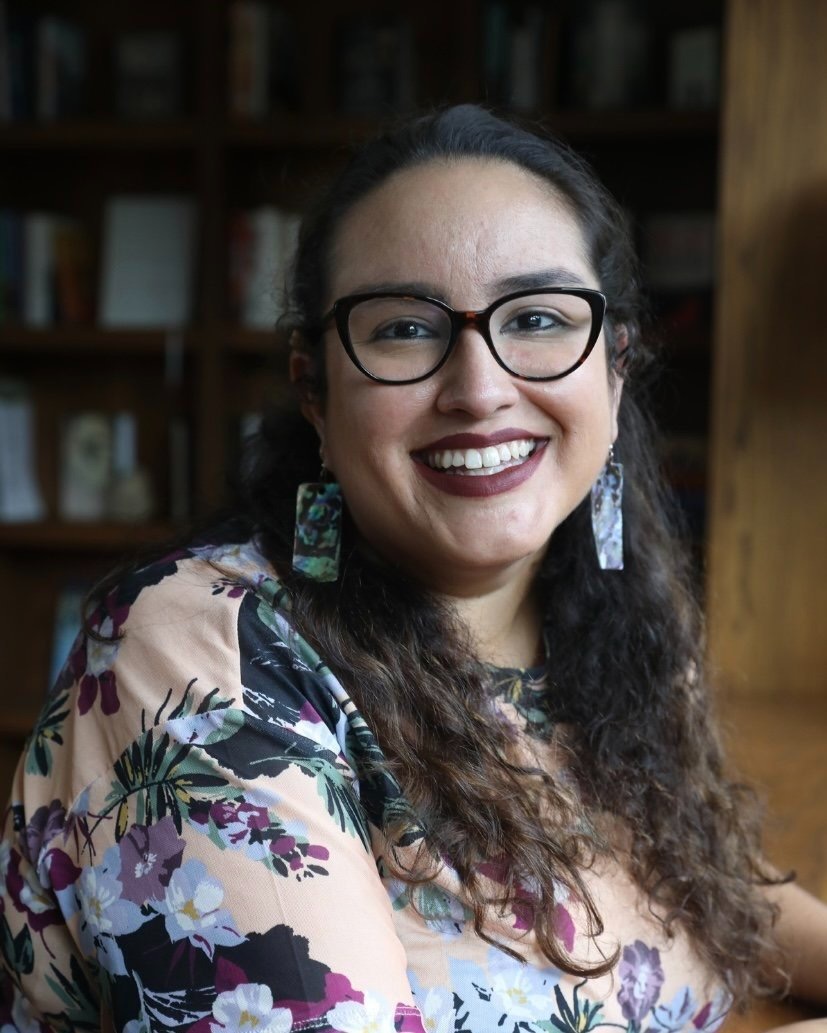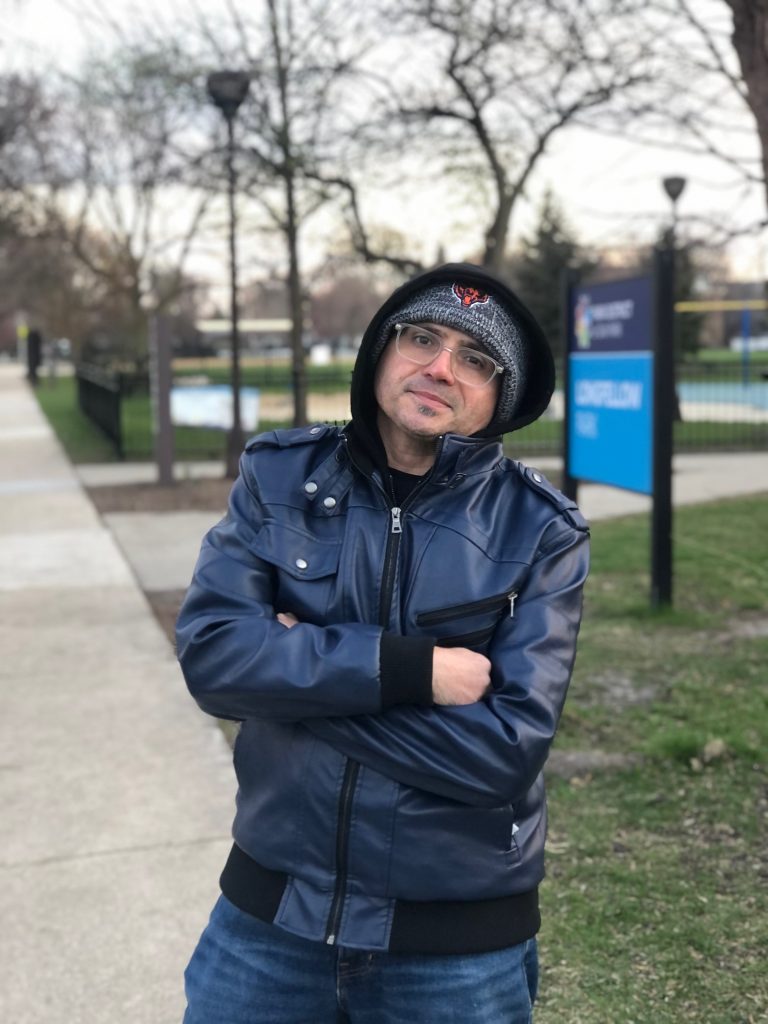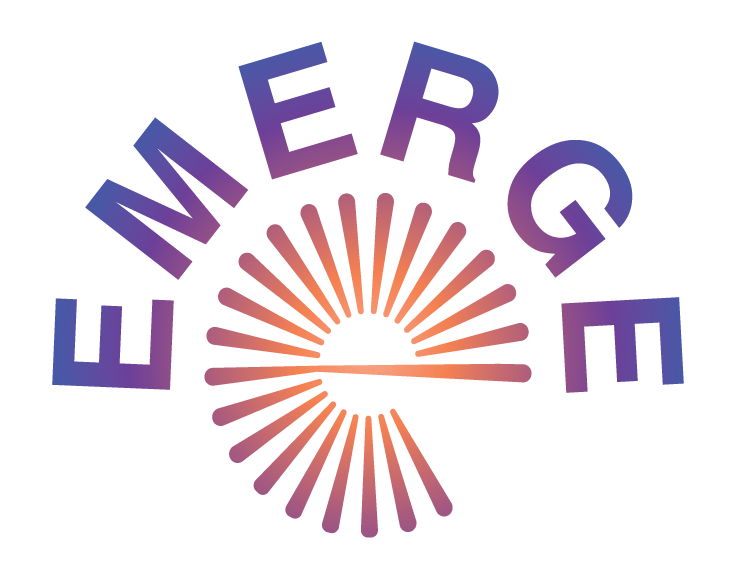A Conversation with Dr. Meranda Roberts and Dr. Onur Öztürk
Colonial practices remain pervasive within the walls of cultural institutions: stolen objects from across the globe are divided into museum wings and categorized by western constructions of identity. This standard both curates non-Western cultures as monoliths and canonizes a Euro-centric worldview. Caring Tactics for Narrative Representation, a conversation with Dr. Meranda Roberts (Indigenous curator, researcher, and advocate) and Dr. Onur Öztürk (Assistant Professor of Art History at Columbia College Chicago), discussed strategies and methodologies for re-presenting Islamic and Native American art and objects in institutions.
This panel was co-produced by Georgia Rose Patterson, Madeleine Zimmerman, Marielle Mervau, and Maya Ortiz Saucedo for the Arts Administration and Policy Department of the School of the Art Institute of Chicago (SAIC). The following transcription was taken from a virtual symposium that was held on May 10th, 2022. To watch the entire symposium and hear more from the discussion, visit www.saic.edu/news/caring-tactics.


Maya Ortiz Saucedo: Institutions have helped create cultural monoliths about Islamic art and the Native American experience. These monoliths succeed in discarding the diversity of these people. What tactics do you both use in your work to undo these monoliths and represent authentic narratives, at the challenge of trying to not create a new monolith?
Meranda Roberts: The way I try to do this starts on an institutional level of trying to get the institution to understand that there are over five-hundred federally recognized nations that comprise North America and these all have different experiences and different creation stories. Even though they intertwine and are similar, and a lot of our experiences may mirror each other, they do so in different ways. In my case, at the Field Museum, to be able to dive deep into one particular tribe is challenging when you are confined to one hall, the Native American Exhibition Hall.
When you’re working with a Native community, it’s important to ask them what type of stories they want to tell and if there is space for them to tell you any stories at all. Let them speak for themselves. One thing I’m very proud of, at least in the exhibition that we’re opening [Native Truths: Our Voices, Our Stories at the Field Museum], is that a lot of the text panels include mostly quotes by the narrators. They’re speaking for themselves about their experiences and about things that shape their lives. To me, that is moving away from that monolithic idea of not being able to speak for themselves in spaces like this. And getting general visitors to understand that you’re only learning one side of one person’s story and it is from their community standpoint, but there’s hundreds more, if not thousands more, stories out there to learn. But hopefully, by zoning in on a particular group or individual, they can begin that process of understanding that we’re much broader than what they’ve been presented with in the past.
Onur Öztürk: Thank you for the question. How do we actually undo myths, while not creating other myths that will be problematic? Although Islamic art was “othered” and categorized in Europe, it also has a long history of study in South Asia, West Asia, and North Africa. It is interesting how this is also politically charged.. I think what I tried to do in my scholarship, museum tours, and classroom is to represent diversity by telling the untold stories. How do I go beyond the expected norms of Islamic art and present that, while also not over-generalizing some of the individual details?
I’m fascinated with the work of the colleagues who contributed to my book [Deconstructing the Myths of Islamic Art.] For instance, Ashley Dimmig, who’s currently at the Walters Art Museum, presented some of her strategies for telling stories from different perspectives, like learning about Black Muslims through the stories of enslaved people and slave traders, and reflecting on how that is intertwined with the history of Islam in North Africa and West Africa. Institutions need to support this kind of work. It requires a lot of energy and attention, but it’s exactly what I have been pushing my colleagues and students to address. It is not a monolith, there are obviously connections. But we are talking about, just like Meranda’s case, 1,400 years of human creativity and incredible artwork, many of them also created by non-Muslim artists or for non-Muslim audiences. I think it is also important to mention that we know many artists outside of European art, including Islamic art: we know their stories, we have histories and biographies that can help us form that perspective.
Marielle Mervau: Meranda mentioned the constraints of museum halls. And Onur, you mention how the Islamic Art Wing has become a display case. How do both of you view the impact of display and place, in the museum itself, but also the location and land of these institutions? What are the relationships between objects and places?
MR: I study Cahuilla basketry and I work with Cahuilla basket makers to learn how they have been able to hold onto traditional basket making techniques despite forced assimilation and colonization. A thing that institutions don’t always understand is our items, not all of them, but a lot of them, are imbued with a spirit that of the maker themselves. The maker of a basket would pray over the materials she used to create the items and would have a very specific basket in mind that she wanted to create that was given to her in a dream. These would be used for ceremonial purposes or for household purposes.
So, there’s a bigger story within those baskets than just their aesthetic purposes. Even though they’re beautiful, and should be admired, there’s a bigger story that’s attached to them. Women who make those baskets put the materials in their mouths to split them and intwine them. And so her DNA and her stories and the love that she has for her community is embedded in those objects. I don’t call them [the baskets] objects, I call them ancestors because they’re alive with that spirit.
Then, how do we try to get the institution to understand that and teach that they should be respected as a living item? First, the institution needs to understand the role that it has played in perpetuating colonialism against these communities. The Natural History Museum has created the narrative of “the other” and has created a narrative that native people are no longer here. Institutions have to take responsibility for creating that history. Institutions need to teach the history of those items in a way that helps people understand that they’re not just dormant items, that they’re not just there to be consumed for art purposes, and that by actually putting them back into the community, you’re able to help people sustain traditional religious purposes and teach traditional basket making. There’s been cases where women didn’t know about a particular stitch on a basket, but once they saw it in person in a museum collection, they began to incorporate that into their stitching.
OÖ: I agree. I have a complicated relationship with museums. I love museums, I work in collaboration with my colleagues at the Art Institute of Chicago and I love the Field Museum. The idea of art as a display object is a relatively limited European notion of defining and looking at art, and then trying to take that and apply it to the rest of the world. And it is problematic. In the case of Islamic art, we are talking about books to read, prayer objects, different textiles to interact with in various ways, and different garments. So, many of the images we study in Islamic art would not fall into the modern age categories of sculpture, painting, and architecture. So it is important for me to activate these pieces. I teach a course called “Art or Ritual”. It is interesting to understand objects in their own context and how they relate to their people. For example, in Islamic pottery, things are revealed as you are consuming, praying, and connecting. So there are some very interesting connections that will be only visible under those circumstances. If we activate these objects in museums, especially art museums, they are still very static. Elitism and Eurocentrism impact engagement with these kinds of objects.
Dr. Meranda Roberts is an enrolled member of the Yerington Paiute (Year-ing-ton Pai-oot) Tribe in Nevada, as well as Chicana. In 2018, she earned her PhD from the University of California, Riverside in Native American History. Over the past few years, she has been working as a post-doctoral researcher at the Field Museum of Natural History, where she is developing content for the renovation of the museum’s seventy-year-old Native American exhibition hall. Meranda’s passion lies in holding colonial institutions, like museums, accountable for the harmful narratives they have painted about Indigenous people. She is also dedicated to reconnecting Indigenous collection items with their descendants. Through the use of Indigenous methodologies, as well as public history pedagogy, Meranda examines the harm colonialism continues to inflict on Indigenous communities and how public institutions can correct these wrongs.
Dr. Onur Öztürk is an Assistant Professor of Art History in the Art and Art History Department of Columbia College Chicago. Originally from Ankara, Turkey, he received an M.Arch. degree in History of Architecture from the Middle East Technical University, and a Ph.D. from the University of Texas at Austin. Dr. Öztürk’s research focuses on the art and architecture of ancient and medieval Asia Minor, modern Turkey. His dissertation provided an in-depth study of the cults of divine rulers and urban transformation in Roman Asia. His current project focuses on the funerary monuments of the female elite in Kayseri. He is the primary editor of the recently published book Deconstructing the Myths of Islamic Art (co-editors Xenia Gazi and Sam Bowker, Routledge, 2022). A selection of his digital maps and architectural illustrations can be viewed in Penelope Davies’ publication Architecture and Politics In Republican Rome (Cambridge University Press, 2017). Dr. Öztürk teaches global art history and visual culture courses including Art of Islam, Art and Ritual, and Rethinking Museums. His teaching and scholarship aim to reveal our intertwined histories while tackling Eurocentric and linear narratives of art history.
